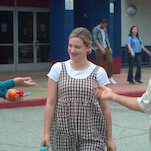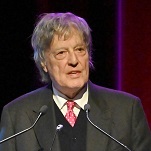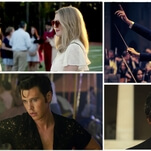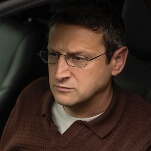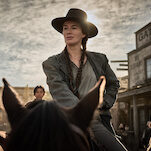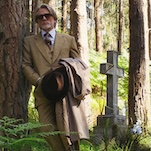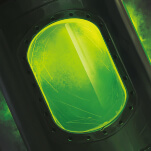With his easygoing charm, his traditional good looks, and his refined masculinity, George Clooney has always seemed like a movie star out of time—a living embodiment of what Hollywood used to look for in its leading men. There’s certainly something very Golden Age about his charisma, about the way he doesn’t so much disappear into roles as play variations on a single, pleasing persona. He’s old-fashioned as a director, too, but less naturally so: While Clooney the actor simply exudes classical appeal, Clooney the filmmaker actively, transparently strives for it. His films, most of which are period pieces, approach American history through the lens of cinematic history—paying tribute to Edward R. Murrow through an evocation of ’50s movies and television, or exploring contemporary politics by way of ’70s political thrillers. They’re referential and reverential, sometimes to a fault.
Clooney’s latest, The Monuments Men, may be his most earnestly retro effort yet. In tackling a non-fiction novel about the quest to rescue stolen European artwork during WWII, the actor-turned-director has made a square, star-studded throwback to a bygone era of Hollywood war movies. Absent is the extreme violence and moral ambiguity of most contemporary combat pictures; in their place, Clooney offers heroic servicemen, villainous Nazis, a fundamentally honorable mission, and the rousing fanfare of Alexandre Desplat’s antiquated score. All of this should amount to an effervescent caper, a revival of the simple pleasures of a simpler cinematic age. But Clooney, swelling with noble purpose, wants it to be something grander. As a result, The Monuments Men feels not just self-conscious but also a bit self-congratulatory, its creator squashing the spirit of adventure with too many grandiose lines about the Importance Of Art.
Clooney stars as Frank Stokes, an art historian deeply concerned about the world’s supply of masterpieces, many of which have been pilfered by the Germans to fill Hitler’s personal museum. Under instruction from President Roosevelt, Frank assembles a task force of fellow academics; because most of the nation’s younger art lovers are already overseas fighting, he’s forced to recruit a roster of older men—six aging intellectuals, played by Matt Damon, John Goodman, Bill Murray, Hugh Bonneville, Bob Balaban, and the French George Clooney, Jean Dujardin. After panting and wheezing their way through basic training, these unlikely troops head for Europe, pairing off into twos to chase leads (and paintings) across the continent.
Superficially speaking, the men-on-a-quest narrative—adapted by Clooney and his semi-regular writing partner, Grant Heslov—recalls Steven Spielberg’s Saving Private Ryan, another film that weighs individual lives against the importance of a mission. But The Monuments Men has no interest in the entrails-out gruesomeness of the battlefield; by design, it resembles an earlier, less explicit brand of American war movie, the kind made before the country got a long, televised look at the horrors of Vietnam. Clooney, though, doesn’t just cut past the bloodshed happening around his heroes. He also drains the movie of urgency. Even when the men find their lives at risk, or when they encounter death during their parallel journeys, a sense of danger never creeps into the proceedings. At times, Clooney even seems to be willfully deflating iconic moments from other war movies: He offers a tranquil echo of the Normandy beach scene in Private Ryan, and reconfigures Full Metal Jacket’s most devastating reveal into a punchline. A fog of Great War nostalgia rolls over The Monuments Men, romantically clouding its vision of a battle-ravaged Europe.
There are pleasures, as there would be for any movie with a cast this good. For example, Murray and Balaban, whose mismatched characters are forced into a partnership, inject some antagonistic odd-couple chemistry into their scenes. And Damon’s moments with Cate Blanchett, who plays a Parisian forced to collaborate with the Nazis, create some fleeting friction. Yet as characters, the Monuments Men are so noble—so unburdened by second thoughts or selfish desires—that there’s little actual drama in their exploits (beyond, of course, the drama of whether they’ll find the famous paintings in time). Clooney has them experience loss and survivor’s guilt, but he never forces them to make tough decisions; in lionizing these men, he turns them into cardboard saints. Every opportunity for real tension is missed: When the team discovers that the Germans have been ordered to destroy the artwork if they lose the war, Dujardin’s character quips, “Let’s hope no one kills Hitler”—a loaded offhand remark that’s never challenged, despite the fact that it seems to get to the heart of the film’s moral quandary about the sacrifices that should be made for the sake of culture.
Casting himself as the conscience of the film, Clooney spends much of his screen time delivering grave speeches, his character little more than a mouthpiece for the actor playing him. (As the South Park boys might quip, the smug emissions from this movie are off the chart.) Yet for all the endless talk of art as the grand achievement of civilization, not one of the characters articulates these feelings in specific terms. One could argue that by keeping archaic cinematic virtues alive, Clooney is mirroring the efforts of his subjects. In truth, however, he’s made a film about the value of art that has little to say about art, and an ode to preserving history that plays a little fast and loose with the facts of history. There’s another way in which Clooney is old-fashioned: Hollywood has always rewritten the past to suit its own crowd-pleasing interests.






